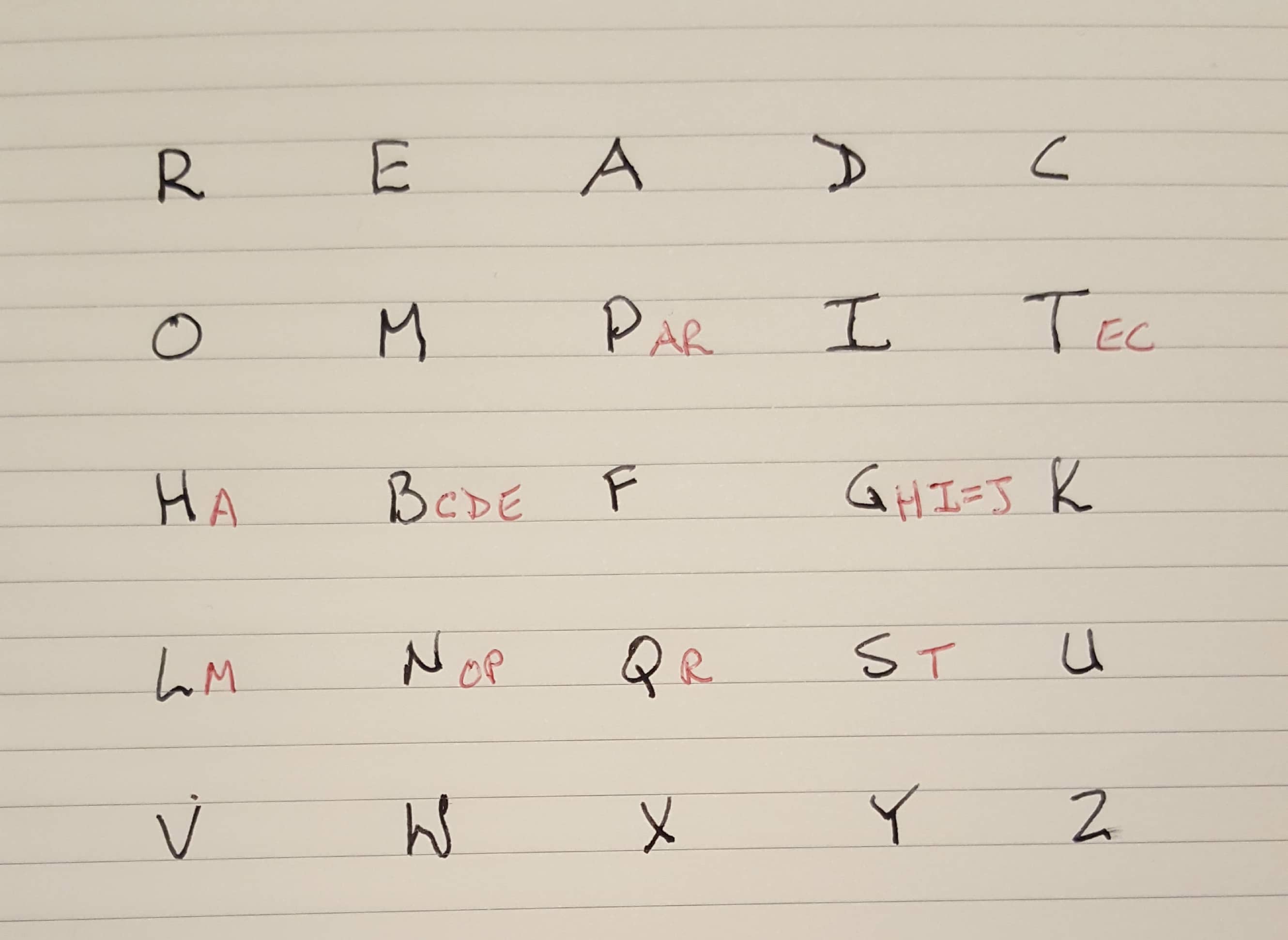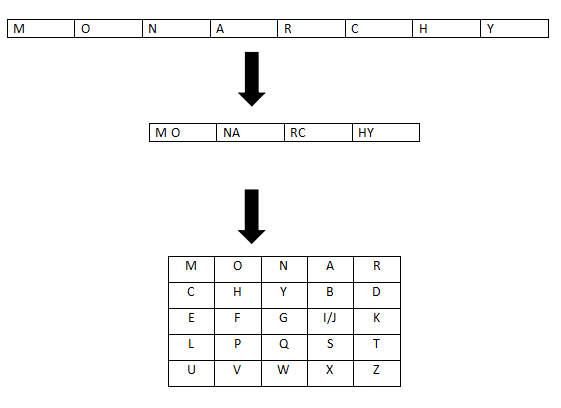

Memorization of the keyword and 4 simple rules was all that was required to create the 5 by 5 table and use the cipher. The third very efficient approach of breaking the Playfair cipher is about guessing plaintext fragments, for instance salutations to a sender, or dates and areas of sending the message.The Playfair cipher uses a 5 by 5 table containing a key word or phrase. It is a relatively easy method, quite simply to implement. It can continue changing the table, accepting changes that enhance quality of the current proposed plaintext. Thus, the attacker can slightly change the table and try to decipher the ciphertext again. The other approach of attacking the cipher is about randomly filling the table and attempting to decode the ciphertext depends on its current values. It can also the Playfair cipher's ciphertext is characterized by a lack of the similar repeated letters that are placed next to each other. It can be identified by making databases of famous words and phrases that include such combinations. First, one can notice that pairs of letters and their inverse pairs (that define pairs such as AC and CA) create the similar pairs in the ciphertext. Knowing estimated frequencies for a language that was utilized in the message, one can try to connect frequent ciphertext pairs to frequent group of letters in the language.īecause of its integrity, the cipher is characterized by features that create it simpler to break. The general approach of dividing the Playfair cipher is about implementing frequency analysis of pairs of letters. In the method of odd number of letters in the message a spare letter X is padded with the word to complete the pair. The message is divided into digraphs, in which re-currenting letters in the equal pair are divided by filler letter X. Playfair is digraph substitution cipher which need a 5×5 matrix, in which the key word is written first and the remaining cells of the matrix are filled with different letter of alphabets with I and J taken in the similar cell. The encryption key for a Playfair cipher is a word through a finite order of characters taken from the group of plaintext characters. Generally, these two characters are i and j, because usually it can be simply to categorize from the context which of these two letters was pre-determined in the plaintext.

This array would be 5 × 5, with 2 of the 26 characters appearing an individual position in the array. Because the group of plaintext characters is the 26-letter English alphabet. Playfair ciphers are an approach of block cipher and the ciphertext character that restore a specific plaintext character in the encryption will rely upon in an element on an contiguous character in the plaintext.Įncryption is adept using a square array of characters, built from the encryption key. Playfair cipher was originally invented by Charles Wheatstone in 1854 but it bears the name of Lord Playfair because he assisted the need of this method.


 0 kommentar(er)
0 kommentar(er)
